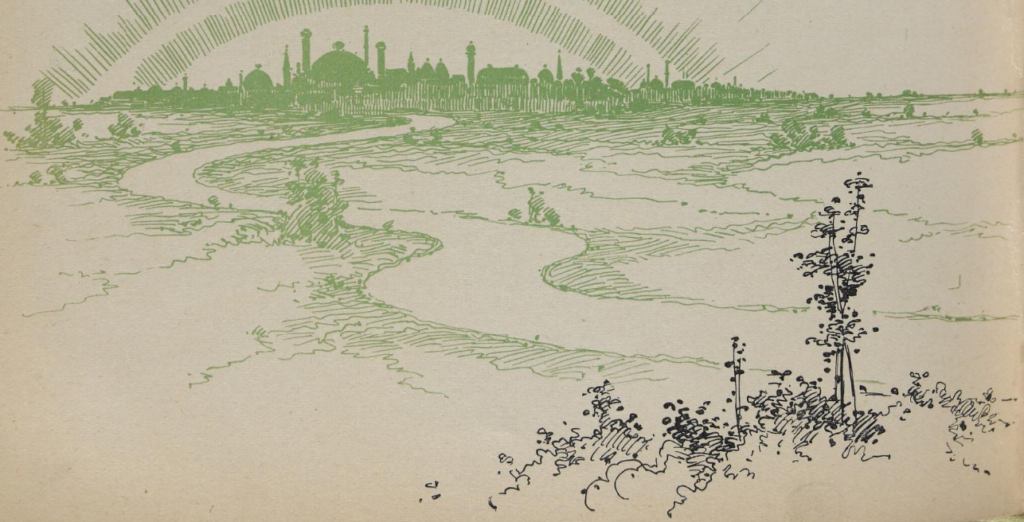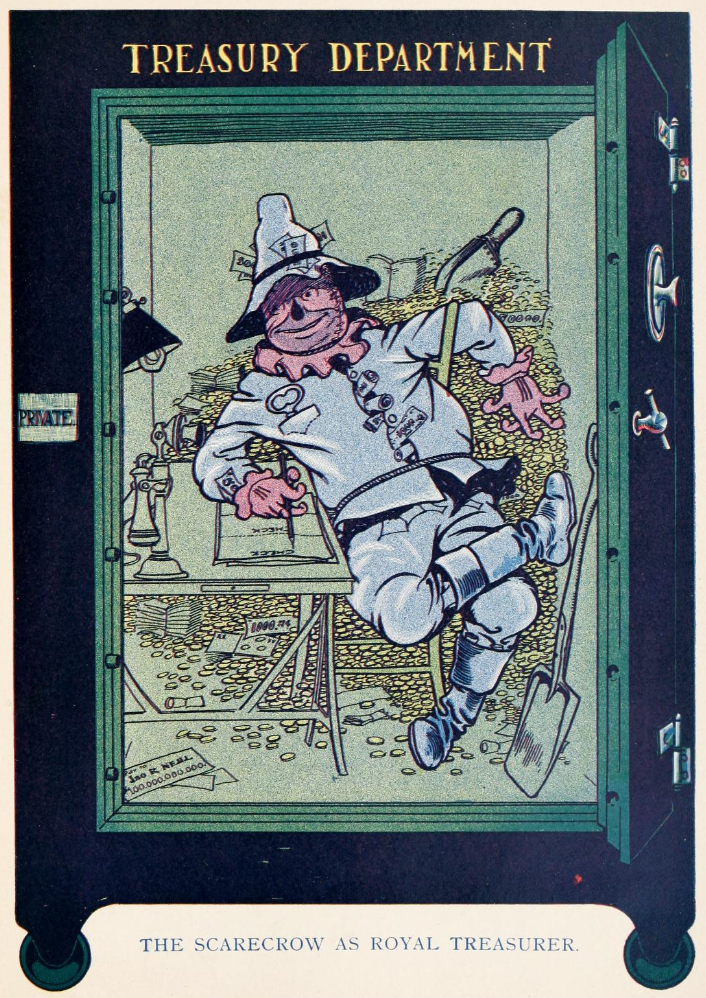The Growleywogs are vicious to Guph, but their “evilness” originates from marginalization due to their strange musculature and incredible physical strength: “In fact, to be different from your fellow creatures is always a misfortune. The Growleywogs knew that they were disliked and avoided by every one, so they had become surly and unsociable even among themselves” (80). The conclusion in which the Whimsies and Growleywogs and even the otherwise purely sadistic Phanfasms lose their maliciousness and mutual hatred by drinking the Water of Oblivion suggests that these “evil spirits” are actually fundamentally decent. Even the Nome King’s wickedness receives a behavioral explanation: “The reason most people are bad is because they do not try to be good. Now, the Nome King had never tried to be good, so he was very bad indeed” (39).
If these “races” are only “evil” as a result of their life conditions, it is strange that Baum’s fantastical solution is not any adjustment of those conditions, such as people showing openness to the strange Whimsies, but instead the complete erasure of their whole identities. The Oz version of Lethe does not metaphysically peel off evil specifically but makes the drinker “become ignorant as a baby” (271). The Water of Oblivion erases identities and histories, leaving nothing left of the original person. The Whimsies, Growleywogs, and Phanfasms apparently do not even retain their names. Although Ozma tells the blank slate Nome King that his name is Roquat, in later books, he is known as Ruggedo because he has truly lost his former personhood to the Water of Oblivion (Tik-Tok 64). The annihilation of three nations’ identities down to their very names—only the majority of Nomes escape this fate—is not the redemption Ozma and her friends pretend. The erasure is instead an atrocity that, given Baum’s racist politics and the ways the evil spirits are coded as Other, functions as a magical version of forced reeducation, of cultural genocide—“Kill the Indian, save the man.”
Beginning especially in Dorothy and the Wizard, Baum expended considerable effort to elide the darker, more complex aspects of Oz’s history and “civilizing.” This exceeds Ozma’s later hypocritical holier-than-thou rejection of violence and killing. In the civilized Oz, Baum consistently describes the Emerald City’s beauty and, of course, emeralds in tones of awe:
[T]he graceful and handsome buildings were covered with plates of gold and set with emeralds so splendid and valuable that in any other part of the world any one of them would have been worth a fortune to its owner. [… T]he curbs that separated the walks from the broad street were also set thick with clustered emeralds. (Road 190)

The narrative’s insistence on the Emerald City’s overwhelming beauty and bejewelment whitewashes (or greenwashes) the themes of the original novel: the Emerald City is a symbol of deception. The Wizard turns out to be a circus performer charlatan. In the American tradition, he is an imperialist who chooses to exercise power over the unfamiliar, “uncivilized” land. The Ozites mistake the Wizard for a, well, wizard in a manner recalling colonial narratives in which natives interpret Europeans as gods (probably most famously in the untrue story that the Aztecs took Cortes for Quetzacoatl). Mirroring the Wizard’s false magic, the Emerald City he creates, though containing many real emeralds, is a deception. The emerald color is ubiquitous only because the Wizard’s minion the Guardian of the Gates forces all people there to wear green-tinted spectacles they cannot remove (Wonderful Wizard 187–188). The Scarecrow continues this policy, but Jinjur does not. And when Ozma civilizes Oz, she quietly drops the green spectacles, along with any possible doubts about the righteousness of the Emerald City’s power.
Similarly, the later books do not present a history in which Ozma has transitioned Oz’s economy away from the use of money but one in which Oz never used money in the first place. Recall the Tin Woodman’s description: “Fortunately money is not known in the Land of Oz at all” (Road 165, emphasis mine). This is simply false:
At one place a man was selling green lemonade, and when the children bought it Dorothy could see that they paid for it with green pennies. (Wonderful Wizard 122)
“Will you row us to the other side?”
“Yes, if you have money,” returned the ferryman, whose face looked cross and disagreeable.
“But I have no money,” said Tip.
“None at all?” inquired the man.
“None at all,” answered the boy.
“Then I’ll not break my back rowing you over,” said the ferryman, decidedly. (Marvelous Land 60)

At the end of The Marvelous Land, the Scarecrow is physically stuffed with money instead of straw and ends up running Winkie Country’s treasury. Money is known in Oz—to the Tin Woodman specifically, despite his later outrage at the very concept. He tells Ozma, “[I]t occurred to me that it is a good thing to have a Royal Treasurer who is made of money.” Ozma responds by telling him that the Scarecrow “must be the richest man in all the world” (286).